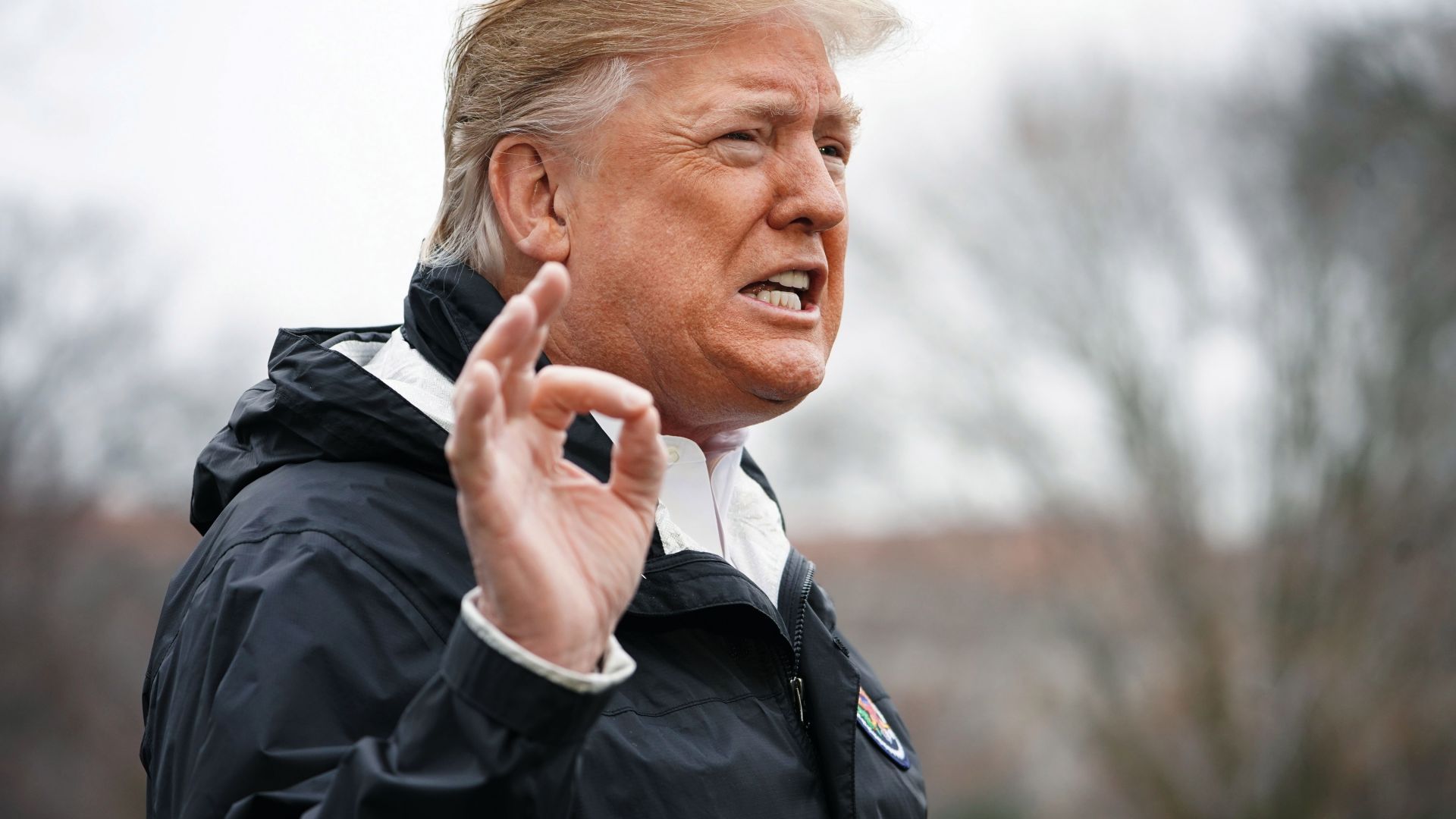President Donald Trump’s new budget proposal for the fiscal year 2020, which was released on Monday, breaks with his repeated campaign promises to rein in the debt and eliminate the deficit.
The newly released budget document — which has very little chance of being enacted wholesale, but nevertheless kicks off the annual federal budget process by articulating the administration’s priorities — calls for massive cuts in domestic programs, increases defense spending, and renews the president’s traditional call for billions of dollars to be allocated for the purpose of building a wall on the Mexican border. Trump has been continually rebuffed by Congress on that last request.
Nonetheless, the document’s intended message contends to be one of fiscal discipline.
“My 2020 Budget builds on the tremendous progress we have made and provides a clear roadmap for the Congress to bring Federal spending and debt under control. We must protect future generations from Washington’s habitual deficit spending,” Trump writes in the “budget message of the president” the precedes the budget document’s accounting.
However, increasing the larger defense budget while simultaneously cutting the relatively small domestic programs and maintaining lower corporate taxes is not a recipe for fiscal security, according to the numbers actually contained within the administration’s proposal.
The stark fiscal reality is not what candidate Trump promised before he was elected.
Rising deficits
Shortly before his inauguration, Trump told Sean Hannity that he would “balance the budget very quickly … I think over a five-year period. And I don’t know, maybe I could even surprise you.” Trump also said he would “freeze the budget.”
Monday’s budget document, however, projects that the annual deficit — the difference between what the federal government takes in versus what it spends — will reach $1.1 trillion by the end of FY 2019, or this September.
One year ago, the Congressional Budget Office projected that the deficit would rise above $1 trillion in 2020, so in that sense things are at least running ahead of schedule.
The budget proposal from the Trump administration does not foresee, as is traditional for these optimistic fiscal blueprints, a projected balanced budget in ten years. According to reports, the Trump administration is projecting that the budget would be balanced by the year 2034. However, that’s a dubious prospect without continued high levels of GDP growth — a scenario unlikely to be sustainable for such a long period of time.
Nevertheless, the Trump administration sees nothing but rosy scenarios ahead. “I don’t think good growth policies have to obsess, necessarily, about the budget deficits and so forth,” White House top economic adviser Larry Kudlow told Chris Wallace on Fox News Sunday. “Look, Chris, my view, and I believe the view of the administration, we are going to point a steady glide path towards lower federal spending and federal borrowing as a share of the economy, as a share of GDP. That lowers the burden of debt.”
Kudlow answered Wallace’s repeated questions about higher deficit spending by pointing to how those deficits compare to the current economic growth, and the performance of the markets.
“I don’t think that’s a burden on the economy,” Kudlow said.”In the long run, we do want to reduce the burden of spending and borrowing, absolutely, but always as a share of GDP.”
Piling on more debt
In his official campaign launch address, Trump promised to “reduce our $18 trillion in debt.” In March 2016, Trump told The Washington Post that he could get rid of the debt “fairly quickly.” When pressed, he said, “Well, I would say over a period of eight years.”
At the time of this telling, the debt stood at $19.3 trillion and rose to approximately $19.5 trilllion by the time Trump was sworn in. Now, the deficit is more that $22 trillion — and Trump’s budget proposal projects that total federal deficit will be $22.8 trillion at the end of the 2019 fiscal year, increasing by about a trillion dollars each year. Even with its rosy assumptions, the Trump administration still projects it will add $8.8 trillion to the debt from the end of FY 2019 to FY 2029.
Tax cuts
Trump contended that, were he to be elected, he would “bring our energy companies back and they will be able to compete and they’ll make money and pay off our national debt and budget deficits.” This has not yet happened.
In fact, when Trump’s 2018 budget proposal is compared to his 2020 budget proposal, the projected revenue per year has actually fallen by about $300 billion.
Left: Trump 2018 budget proposal
Right: Trump 2020 budget proposal
Difference: More than *twice as much* added to the national debt over 10 years. pic.twitter.com/OyT5uZm3jR
— Jim Tankersley (@jimtankersley) March 11, 2019
Moreover, the tax cut bill that Trump and his compatriots in Congress pushed through at the end of 2017 was intended to cut taxes for wealthy individuals and corporations so that their increased growth and productivity would make its way back into the federal treasury and help shrink the deficit. This, too, has failed to come to pass.
Since taking office, Trump has quieted on the debt, tweeting about it less than a handful of times, once in February 2017, and again in November 2017 and August 2018.
Trump’s first joint address to Congress and his subsequent two State of the Union addresses also failed to mention the debt, the budgetary deficit, or anything related to fiscal policy. Last year, Trump’s budget director and current chief of staff, Mick Mulvaney, dismissed his boss’ budget promises as “hyperbole.”


